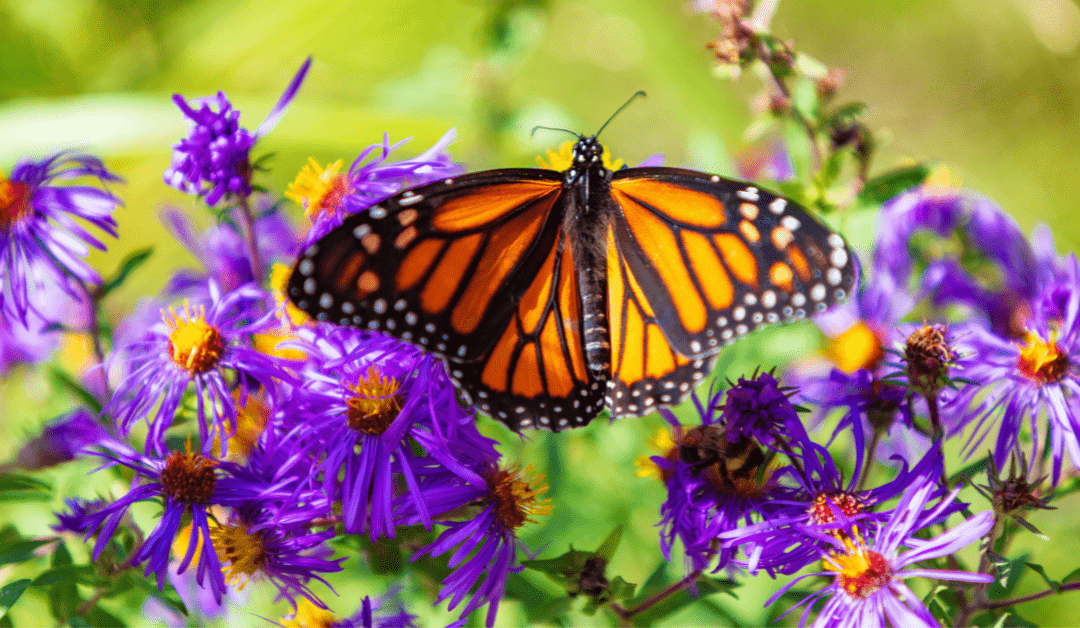Seasonal Considerations
Don’t Forget to Plant Late Bloomers for Pollinators!

Monarch Butterfly on New England Asters, Symphyotrichum novae-angliae
AUGUST 16, 2023
Think of Your Bloom Times
As the fall season draws near, it’s crucial to bear in mind that the majority of plants are winding down their blooming period. Engaging in the cultivation of fall-blooming plants takes on particular significance as it lends crucial support to bees, beetles, butterflies, moths, and even hummingbirds – all of which are on the cusp of hibernation or migration. By providing these plants strategically, we can help aid the dormancy and migration process of these important pollinators, ensuring their continued health and vitality.
And don’t forget about the Monarch Butterflies! Although the larvae only feed on milkweed plants (Asclepias spp.), blooms of those plants are long gone by this time of year, and adult monarchs need an abundance of fuel in order to complete their journey south to Mexico for winter.
Forbs for Fall
Whatever their winter survival method, all pollinators will need an ample supply of nectar provided by our late-season bloomers in order to complete these tasks for winter preparation. Our favorite, most common fall bloomers on the perennial side include Asters (Symphyotrichum and Eurybia species), Goldenrods (Solidago and Oligoneuron species) and Blazing Stars (Liatris species). For all three of these categories, there is a species that can fit any garden site, whether dry or wet, shade or sun. Obedient Plant (Physostegia virginiana) and Great Blue Lobelia (Lobelia siphilitica) are great choices for areas with some excess moisture. Any one of these selections will provide beautiful, colorful flower displays for the garden viewer as well as an abundance of nectar for our pollinators.
Late Season Shrubs
In addition to these forbs, there are also a few shrub selections that are excellent choices for late-season nectar sources. Meadowsweet (Spiraea alba) and Hardhack (Spiraea tomentosa) bloom from late summer to mid-fall with tall spikes of white and pink flowers with plenty of nectar to share. More of a smaller tree than a shrub, Common Witchhazel (Hamamelis virginiana) blooms from late October into December providing a much needed food source in a time of scarcity.
Support your Pollinators!
Regardless of the way you decide to form your pollinator garden, make sure you are thinking of the full growing season in your planning. This will provide the best enjoyment for you as well as provide the support our pollinators so greatly need.
Happy planting!